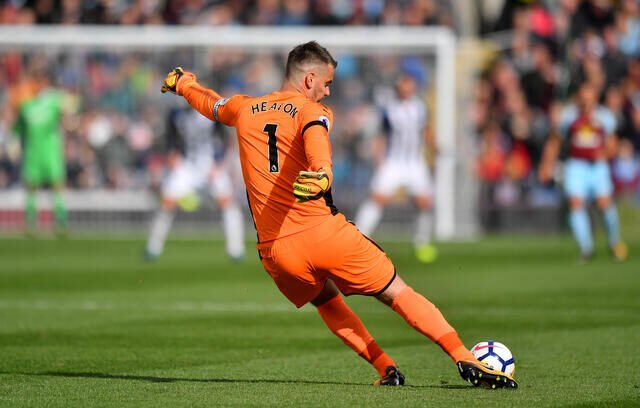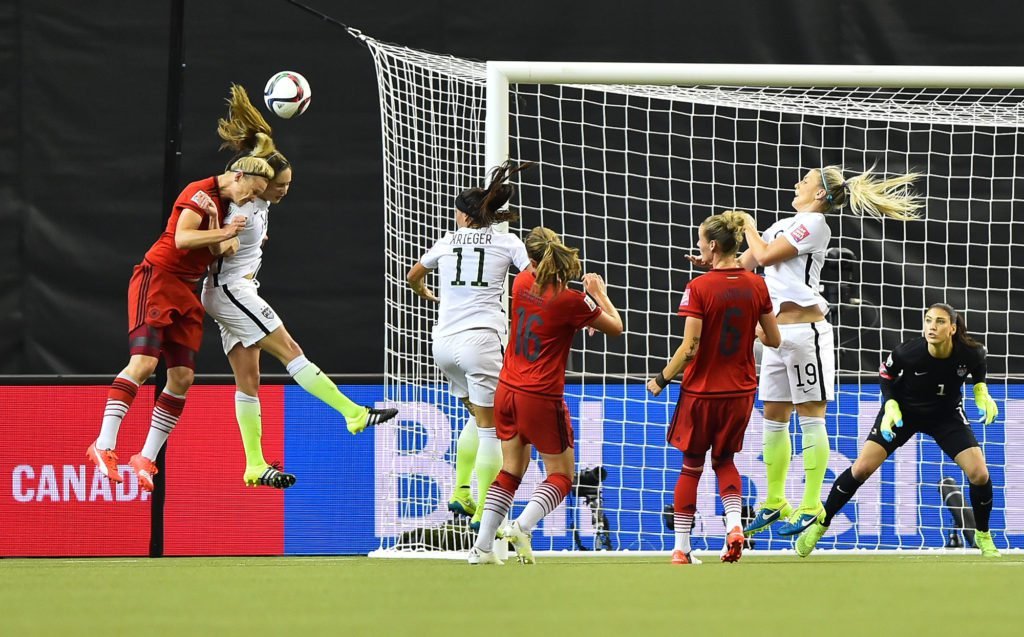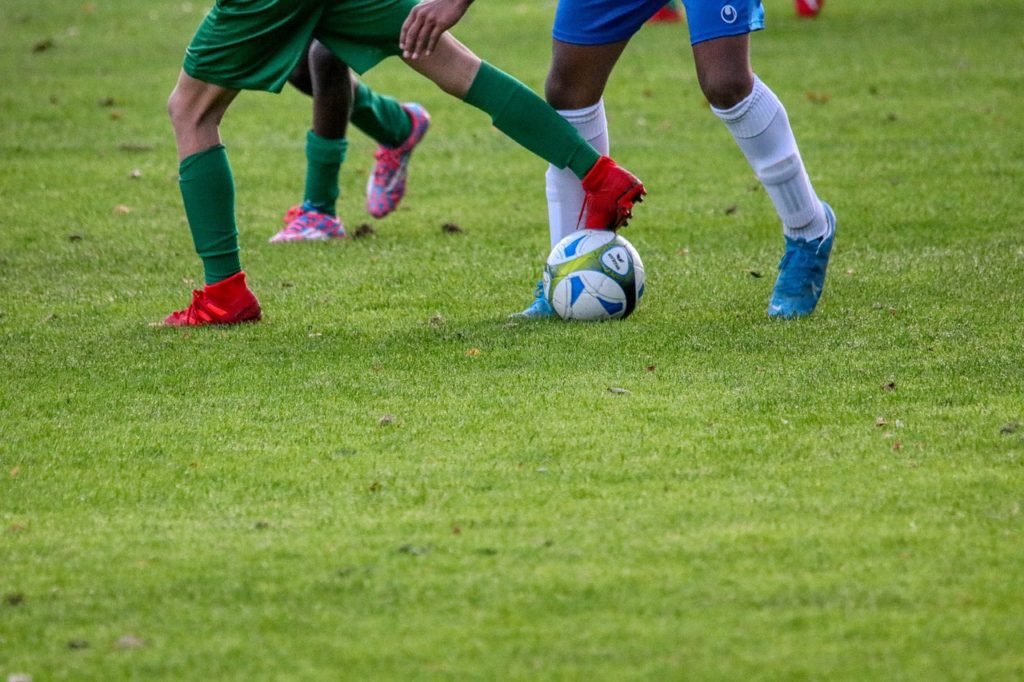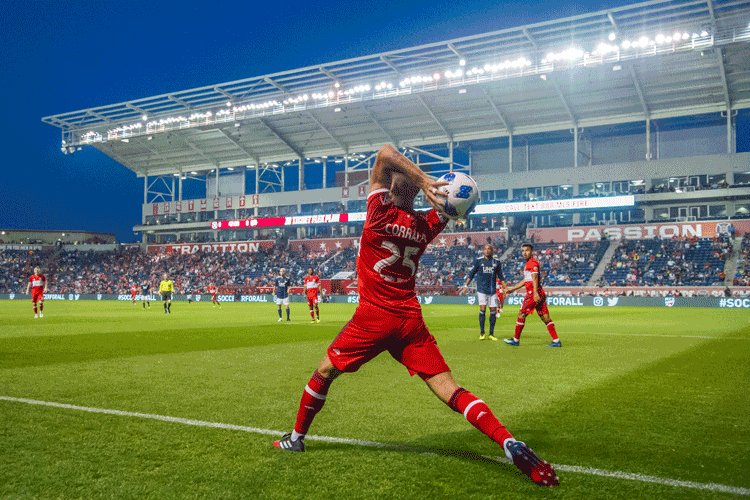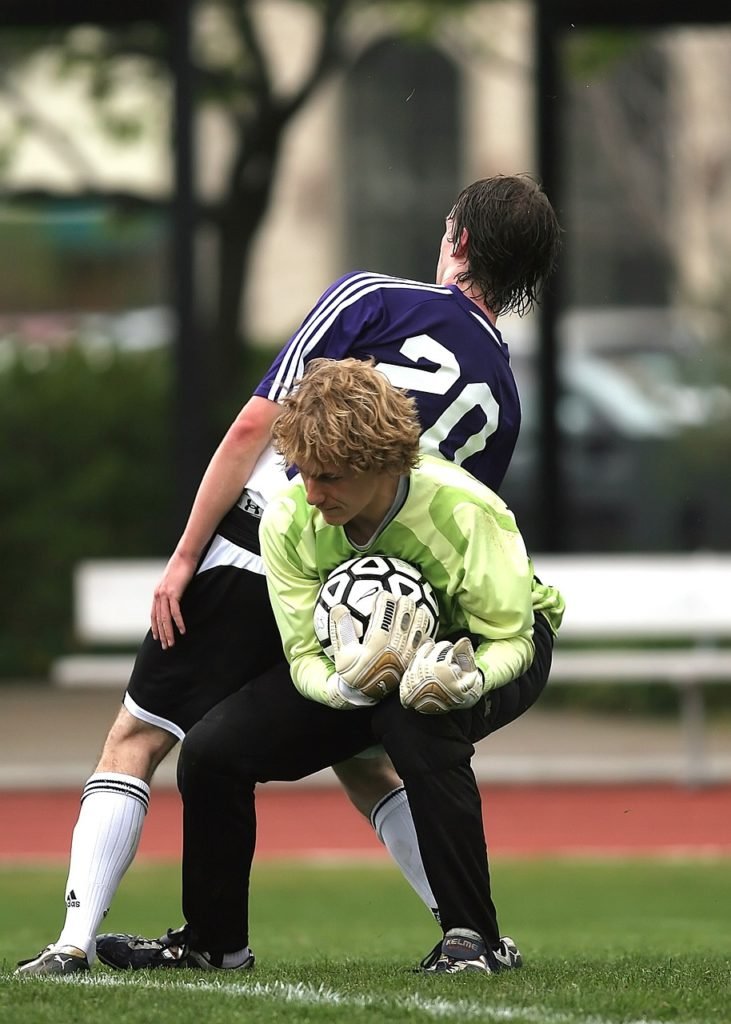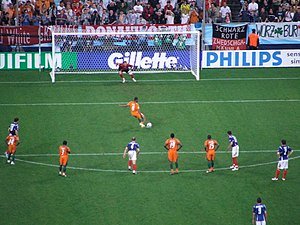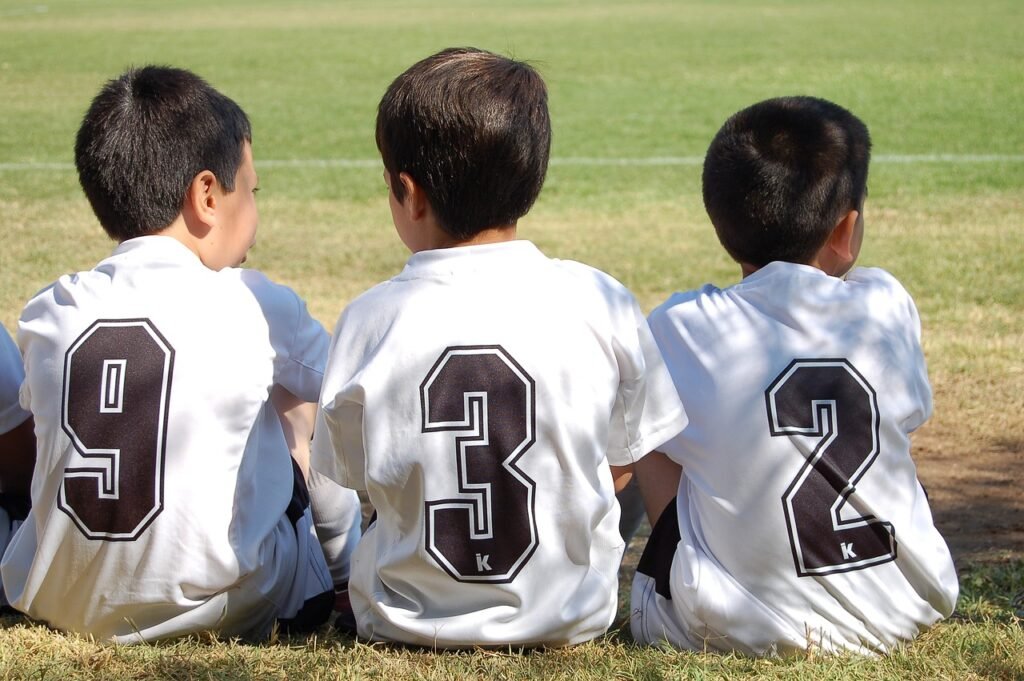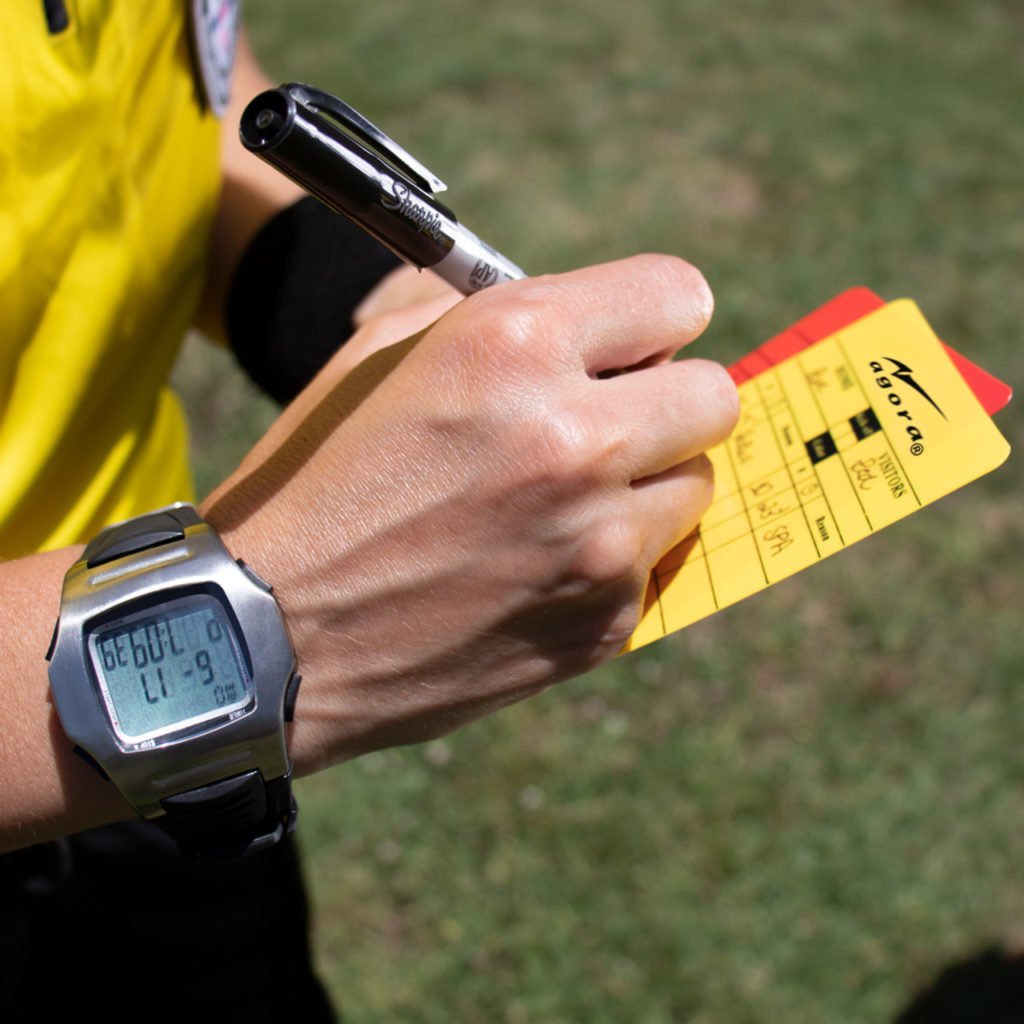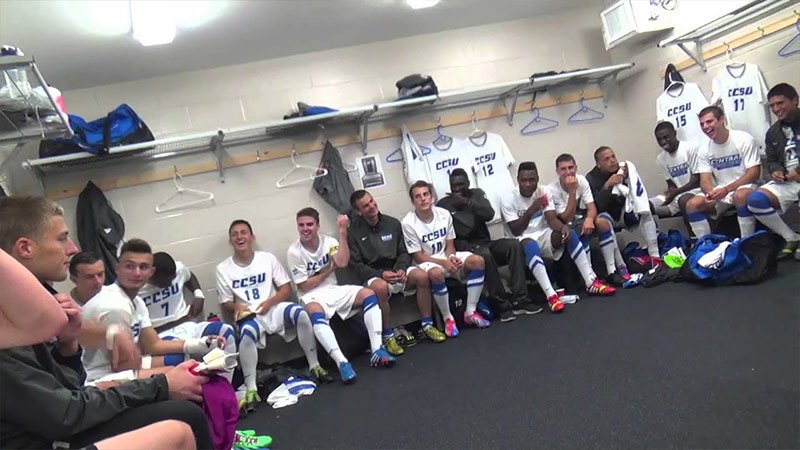Soccer is governed by a set of rules known as the Laws of the Game. These laws provide structure and fairness to the sport, ensuring that matches unfold with integrity and adherence to a shared code of conduct.
Every aspect of play is meticulously outlined in these laws, from how goals are scored to the punishment for fouls committed on the field. In this comprehensive article, we will delve into one specific law: Law 16 – The Goal Kick.
A goal kick serves as a crucial component in restarting play from the goal area after an attacking team fails to score or sends the ball out of bounds over their opponents’ goal line. Understanding this rule is vital not only for players but also for coaches, referees, and avid spectators who seek a deeper comprehension of soccer’s intricacies.
Soccer rules of the game
The Growing Concern for Player Safety in Soccer
Soccer, a beloved sport played and watched by millions around the globe, has been grappling with a growing concern: player safety. The physical nature of the game, with its high-speed collisions, aerial challenges, and competitive tackles, puts players at risk of sustaining various injuries.
Among these concerns, concussions have emerged as a significant issue that cannot be taken lightly. Concussions, often resulting from head clashes or blows to the head during matches, are traumatic brain injuries that can have serious long-term consequences if not managed properly.
The potential risks associated with concussions range from cognitive impairment to an increased likelihood of developing neurodegenerative diseases later in life. With a heightened awareness and an increasing body of research highlighting the long-term impact on players’ health and well-being, soccer’s governing bodies are under pressure to prioritize player safety.
Concussion Substitutions in Soccer: evolving concussion protocols Read More »
Traditional Refereeing Methods: Balancing Act on the Pitch
In the realm of soccer, referees have always been the authoritative figures entrusted with the task of maintaining order on the pitch. They rely on their eyesight, experience, and intuition to make crucial decisions in real time.
However, this traditional approach to refereeing is not without its challenges. With players moving at lightning speed and matches played in high-pressure situations, it’s no wonder that referees occasionally make errors or miss crucial incidents.
Their limited field of vision often leaves them susceptible to human fallibility. Referees are expected to keep track of a multitude of factors simultaneously – from offside positions to potential fouls or handballs.
The fast-paced nature of soccer sometimes results in split-second decisions that can have long-lasting consequences for teams and players alike. Moreover, acting as both judge and executioner adds immense pressure to their role as they must make snap judgments that impact the flow and outcome of a match.
The Impact of VAR on Modern Soccer: Video Assistant Referee Read More »
Brief Overview: Soccer as a Popular Sport Worldwide
Soccer’s popularity stems from its accessibility, simplicity, and universal appeal. It has woven itself into the tapestry of numerous societies around the globe, captivating hearts with its blend of skillful technique, strategic prowess, teamwork, and sheer passion. From Brazil’s samba style to Spain’s tiki-taka passing game or Germany’s disciplined efficiency – each nation contributes to soccer’s rich tapestry through their distinctive playing styles.
The sport’s prominence can be witnessed in international tournaments such as the FIFA World Cup or UEFA Champions League where nations compete fiercely to secure glory on a global stage. The camaraderie formed within fan bases further solidify soccer as more than just a game; it becomes an emblem that unifies cultures under one banner – united by their shared love for this enthralling sport.
Moreover, soccer serves not only as entertainment but also as an economic powerhouse driving immense revenue through merchandise sales, broadcasting rights deals, sponsorship agreements, and ticket sales. Stadiums fill with passionate supporters who create an electrifying atmosphere that can stir raw emotions, forming an indelible bond between players, fans, and the game itself.
The Crucial Role of a Soccer Referee
In the vast realm of soccer, where skill, strategy, and passion collide in a captivating display, there exists a figure whose presence often goes unnoticed amidst the adrenaline-fueled chaos—the referee. Although frequently overlooked by spectators and players alike, the role of a soccer referee is nothing short of crucial in ensuring fair play and upholding the integrity of the game.
Before each match kicks off, soccer referees diligently prepare themselves for the challenges that lie ahead. Their pre-game responsibilities encompass studying and familiarizing themselves with the Laws of the Game—a comprehensive set of regulations that govern every aspect of play.
From corners to throw-ins, player positions to free kicks, these laws serve as their guiding light throughout each match. But it’s not just about knowing the rules; soccer referees orchestrate much more than simple rule enforcement.
They are tasked with maintaining an environment where fair play prevails and sportsmanship reigns supreme. A critical aspect of their job is to act as guardians of fair competition—ensuring that players adhere to both the letter and spirit of those laws that define this beautiful sport.
Law Number 15 – Throw Ins
A throw-in in soccer is granted to the team opposing the player who last made contact with the ball, causing it to cross the touchline completely, whether on the ground or in the air. It’s important to note that a goal cannot be directly scored from a throw-in.
If the ball enters the opponents’ goal, a goal kick is awarded, while if it enters the thrower’s goal, a corner kick is awarded.
The procedure for a throw-in is as follows:
The player executing the throw-in, or the thrower, must face the field of play.
The thrower must have part of each foot either on the touchline or on the ground outside the touchline.
The thrower must use both hands to deliver the ball from behind and over the head, from the point where the ball left the field of play.
All opponents must maintain a minimum distance of 2 meters (or 2 yards) from the point on the touchline where the throw-in is to be taken.
The ball is considered in play once it enters the field of play. If it touches the ground before entering, the throw-in is retaken by the same team from the same position. If the throw-in is not executed correctly, it is retaken by the opposing team.
A player can deliberately throw the ball at an opponent to play the ball again, provided it’s not done in a careless, reckless manner, or with excessive force. In such a case, the referee allows play to continue. However, the thrower is not allowed to touch the ball again until it has made contact with another player.
Offences and sanctions during a throw-in include:
If the thrower touches the ball again before it has made contact with another player, an indirect free kick is awarded. If the thrower commits a handball offence, a direct free kick is awarded. If the offence occurred inside the thrower’s penalty area, a penalty kick is awarded unless the ball was handled by the defending team’s goalkeeper, in which case an indirect free kick is awarded.
An opponent who unfairly distracts or impedes the thrower, including moving closer than 2 meters (or 2 yards) to the place where the throw-in is to be taken, is cautioned for unsporting behavior. If the throw-in has been taken, an indirect free kick is awarded.
For any other offence, the throw-in is taken by a player of the opposing team.
Brief History of Soccer
Soccer has been played in various forms throughout history with records dating back as far as 2500 BC in Ancient China where they played a game called Cuju which means “kickball”. Over time, different variations of ball games began to emerge across Europe during the Middle Ages. It wasn’t until 1863 that England established rules for Association Football which became known as modern-day soccer.
The first official international match was played between Scotland and England on November 30th, 1872 at West of Scotland Cricket Club’s ground at Hamilton Crescent in Glasgow where it ended in a 0-0 draw. Since then soccer has grown exponentially becoming one of the most popular sports worldwide with major tournaments such as the FIFA World Cup drawing billions of viewers each tournament.
What is a set piece in soccer?
Introduction
Soccer is a sport that requires both individual and team skills. A slice of its teamwork comes in the form of set pieces – an integral part of the game.
Set pieces in soccer are moments when play stops, and the ball is restarted under specific conditions. Whether it’s a free kick, corner kick, or throw-in, set pieces provide teams with a chance to strategize and execute pre-planned moves that can often lead to crucial goals.
Definition of a Set Piece in Soccer
A set piece in soccer is any restart where play stops and starts again under specific conditions. The game restarts after an infringement has occurred – like a foul or ball going out of bounds – giving the opposing team a chance to score or create potential goal-scoring opportunities. Free kicks, corner kicks, and throw-ins are all examples of set pieces.
Set pieces provide tactical opportunities for teams – they offer scenarios where it’s possible to execute pre-planned moves for either defensive or attacking purposes. Teams prepare for these moments by developing strategies that aim to take advantage of their opponent’s weaknesses while minimizing their own vulnerabilities.
The Importance Of Mastering Tackling Skills For Success In Soccer
To succeed in soccer, it is essential to master tackling skills. Good defenders are critical to a team’s success as they form a solid barrier against the opposition’s attacks.
Effective tackling can also create opportunities for counter-attacks by giving your team possession of the ball. By learning proper body positioning, timing, and anticipation, you can tackle safely without injuring yourself or others.
Remember that tackling is not just about physical strength; it involves mental agility as well. With practice and dedication, anyone can become an excellent tackler in soccer.
Don’t be afraid to make mistakes; they are all part of the learning process. So go out there on the field and start improving your tackling skills today!
The Importance of Keeping a Clean Sheet: An Introduction to Soccer’s Most Coveted Record
Soccer is a sport that is as much about defending as it is about attacking. While scoring goals is undoubtedly the most exciting aspect of the game, defenders and goalkeepers play a crucial role in ensuring their team doesn’t concede any goals. One way of measuring this defensive effort is through the record known as a “clean sheet.”
A clean sheet refers to when a team has successfully prevented their opponents from scoring in an entire match. It’s a term that’s commonly used in soccer and one that holds significant importance for goalkeepers and teams alike.
A clean sheet can be seen as the ultimate form of defensive brilliance, where not even one goal slips past the keeper and into the back of the net. It’s important to note that keeping a clean sheet isn’t just about individual performances; it’s also about teamwork and discipline.
Soccer, also known as football, is one of the most popular sports in the world. With over 4 billion fans globally, soccer has become a passion for many people across different cultures and ages. The game is played with two teams of eleven players each who aim to score more goals than their opponent.
The team that scores more goals at the end of the game typically wins. Penalty kicks are one aspect of soccer that can change the course of a match within seconds.
Teams can win or lose based on penalty kicks given by referees during games. This makes penalty kicks an essential element of soccer that every player and fan needs to understand.
Introduction: Exploring the World of Soccer relegation
Soccer is one of the most popular sports in the world, with millions of fans and players alike following various leagues and tournaments. The rules and structure of the game can be complex, but one aspect that often stands out to fans and players alike is the concept of promotion and relegation.
Promotion and relegation refers to the system by which teams move between different levels or divisions within a league based on their performance. At its core, it incentivizes teams to perform at their best in order to avoid getting relegated down a level or achieve promotion up a level.
In many ways, this system adds an extra layer of excitement to soccer as it keeps things interesting for fans right up until the end of a season. There are several leagues around the world that use this system, with perhaps none more famous than England’s Premier League.
Soccer is one of the most popular sports globally, with millions of people playing and watching it every day. The beauty of soccer lies in its simplicity, but some rules can be quite confusing for both players and fans. One such rule is the handball rule, which is currently a hot topic in the world of soccer due to several controversies surrounding it.
Soccer, known as the beautiful game worldwide, has seen various changes to its rules over the years, reflecting the sport’s dynamic nature. One of the aspects that has undergone significant transformation is the substitution rule.
Here, we delve deep into the world of soccer substitutions, exploring its evolution, current state, strategic implications, and the differences in rules for professional and youth games.
Soccer Substitution Rules: The Strategic Art of Changing the Game Read More »
Introduction: Overtime Soccer Rules Everything You Need To Know
Soccer is a game that is loved and revered all over the world. It’s a sport that can bring together people from different cultures, backgrounds, and walks of life. One of the most exciting aspects of soccer is when a game goes into overtime.
Over time soccer can be nerve-wracking, thrilling, and exhilarating all at the same time. This article will cover everything you need to know about overtime soccer rules.
Overtime soccer occurs when two teams are tied after regulation time has ended. The purpose of overtime is to determine a winner by giving both teams an opportunity to score additional goals during extra minutes of play.
An important aspect to note is that not all soccer games have overtime periods. In some leagues or tournaments, the outcome may be determined by penalty kicks if there’s still a tie after regulation time.
The length of each overtime period can vary depending on the league or tournament rules. In most competitions, overtime periods are typically 15 minutes long with a short break in between halves to allow players to rest and hydrate before resuming play.
Soccer Overtime Rules: Everything You Need to Know Read More »
Picture this: a soccer match, with one team dominating the field and leaving their opponents in the dust. But what if I told you there’s a game-changer, a rule that steps in to protect the underdogs and preserve the spirit of fair play?
Enter the captivating world of the mercy rule in soccer. This rule, designed to shield the losing team from further humiliation and safeguard the well-being of the players, holds the power to bring an early end to the game, sending shockwaves through the field, and igniting discussions that go far beyond the final whistle.
Are you ready to uncover the fascinating dynamics and controversies that surround this game-altering regulation? Join me as we delve into the captivating realm of the mercy rule, where the stakes are high and the drama unfolds.
Halftime in FIFA and MLS matches is a fixed duration of 15 minutes, but what happens during that time? Learn how players and fans use halftime to prepare for the second half of the game, and what happens if the game goes into a penalty shootout.
A corner kick is a type of free-kick that is awarded to the attacking team when the ball goes out of play across the defending team’s goal line, either by being kicked or touched by a defending player. The main objective of a corner kick is to create a scoring opportunity for the attacking team.
[3] If a goal is not scored directly from the corner kick, the ball remains in play until it leaves the penalty area. If a defending player touches the ball before it leaves the penalty area, the attacking team can take another corner kick.
Yellow cards are used to maintain order and fairness on the soccer field, as they discourage players from committing offenses that could potentially harm other players or disrupt the game. They also serve as a warning to players that their conduct is being monitored and may result in more severe disciplinary action if they continue to commit offenses.
The standard number of players on a soccer team is eleven. Each team comprises one goalkeeper and ten outfield players. The outfield players have specific roles and responsibilities and are divided into defenders, midfielders, and forwards. The goalkeeper’s role is to prevent the opposing team from scoring by stopping shots on goal.
